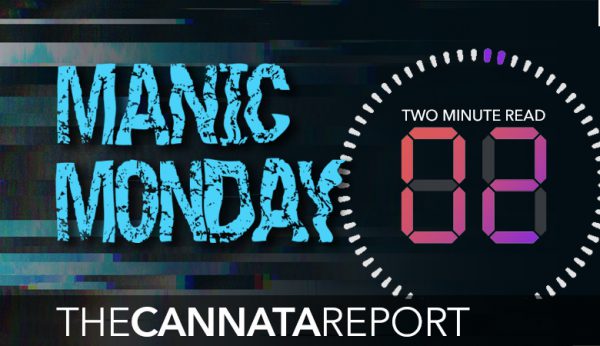Conflicting views as to the value of sustainability initiatives in MPS to increase sales doesn’t mean there isn’t an opportunity.
MPS is an excellent starting point for some dealers interested in meeting their customers’ sustainability initiatives although it has yet to permeate throughout the channel.
“Our focus is for me to drive MPS primarily in the enterprise space,” explained Jeff Wilson, vice president of business development at FlexPrint and Flex Technology Group. “In most parts of the country, the ability to impact their carbon footprint and reforest is absolutely part of our talk track and tends to land at most of the companies that are prospects or customers of ours. It’s the right thing to do.”
One way that Flexprint can assist with a company’s sustainability initiatives is by helping customers eliminate discretionary printing such as printing a report or printing documents that aren’t necessary. FlexPrint has also partnered with Trees for Life, an organization that reforests for FlexPrint and its customers. The customer then receives a certificate detailing how many trees were replanted on their behalf.
“Ninety-some percent of our customers love that,” said Wilson. “They post it on the internet and use it in their marketing to show how they are reducing their carbon footprint.”
According to Wilson, customers most receptive to the sustainability message are found in California, the Northwest, Texas, and the Midwest. In certain parts of the Southeast, less so, particularly in coal mining country.
“You have to know your audience, right?” acknowledged Wilson.
Costs a Little Bit More
There is a price tag attached to sustainability initiatives.
“In most industries, when people talk about being green, there’s a big capital outlay on the front end to eventually take advantage of it on the back end like buying solar, buying better light bulbs, etc.,” said Wilson. “But with reforestation, there is no cost of entry for us. If you sign a contract for our standard MPS program, we reforest as a byproduct of the program. Customers will potentially save money and see an impact from a reforestation standpoint without an up-front capital expense to get started.”
If a customer is interested in taking things further, FlexPrint provides software to reduce discretionary printing. By bringing visibility to print volumes generated by different departments and tracking the devices doing the printing, it raises awareness that certain departments might be printing more than necessary.
Consumer Reports
West McDonald, vice president of business development for Tigerpaw Software, one of the imaging industry’s best-known advocates of MPS, sees a valuable sustainability play in MPS. He references what’s happening with consumers, particularly younger consumers, who are passionate about saving the environment.
“We’ve got to catch up to the trends that are happening in the world,” McDonald said. “People are big on single-use plastics being taken out of the marketplace. I’m not sure what the example would be in the States, but here in Canada, there is going to be a law that states they can’t use plastic bags for groceries anymore. Smart dealers will look at those patterns and align their message to their customers about what they can do. Dealers must look at the world at large and what those habits and changes are. Sustainability is a big one.”
McDonald often raised the sustainability issue when he was doing managed print assessments.
“I don’t think we ask enough questions in a typical MPS sale, but every organization in their annual report has a sustainability objective—waste reduction, etc.,” said McDonald. “If that question is asked, it becomes an integral part of the MPS sales process, and a dealer can say, we can help you with that.”
Another argument for a sustainable approach around MPS is that it’s a way to move away from single-use plastic toner cartridges.
“Even if cartridges are being recycled, that’s still a ton of energy that it goes into recycling them and there are arguments as to whether or not it’s more carbon-neutral than just using new plastics,” stated McDonald, adding that reducing an organization’s carbon footprint is a legitimate selling point.
“When you can show a customer that you’re saving them money while allowing them to reduce their carbon footprint, it helps in the sales process.”
A big reason why McDonald is so bullish on doing managed print assessments and helping customers reduce printing was that it took win rates when he was selling MPS from three out of 10 to seven out of 10.
“It’s a powerful way to win more business and, yes, it does take more work on the front end, but you are throwing fewer opportunities away,” noted McDonald. “Part of that message was always sustainability. We would look at what they’re using, measure the carbon footprint and reductions, and it would be part of the proposals. It’s not that hard to do.”
And customers who embrace the sustainability message tend to feel good about their decision.
“They can use it in their reporting to their customers, but it’s generally a money saver,” stated McDonald. “It’s rare that you can engage in a sustainability practice that makes an impact while at the same time save money. Usually, sustainable alternatives are expensive. In the managed print world, that’s a win-win.”
Sustainability Counterpoint
While researching this article, several dealers who responded to our interview requests indicated they don’t see sustainability offerings as an opportunity because their customers aren’t interested. As Pat Haney, vice president of copier sales at Marco told us, “It’s almost never on a bid we see.”
“I don’t think anybody cares about sustainability, unless it’s going to save them money,” observed the CEO of a large East Coast dealership who chose to remain anonymous. “We can sell people on ways to reduce their carbon footprint, but people don’t care. Sustainability is nice and makes sense, but unless there’s compliance around sustainability, people will follow it if it works with what they’re doing. They’re not going out of their way.”
Greg Walters of Walters & Company, a leading MPS advocate, questions the connection between sustainability and MPS.
“The reason you’re probably getting resistance from dealers is that it’s all baloney, which is terrible to say,” posited Walters. “Depending on whom you talk to, we’ve got more trees in the U.S. now than anywhere else. And by the way, paper is bio-degradable, so sustainability based on paper usage is kind of transparent now.”
He remains cynical.
“Unless it’s a Fortune 500, Fortune 1000, or a big local company, the green movement does not gain business,” he opined. “You can make people feel good about saying, ‘Dow Chemical or Johnson & Johnson recycle 1,000 cartridges a year.’ It’s a feel-good thing, but it doesn’t bring anything substantial to the table.”
However, Walters acknowledged it is possible to discuss sustainability and reducing energy consumption when selling MPS.
“We’re going to pull out these printers and these devices, and reduce your electric spend is one viable argument,” he acknowledged.
Another is focusing on the recycling of toner cartridges.
“But ultimately, you can only reuse a cartridge so many times before you have to pull it apart and grind it up and put it into a different system or different product path,” said Walters. “The most sustainable cartridge is the one you never buy.”
Sustainability has rarely been part of his MPS talk track.
“If it comes up, it’s from the client-side, ‘What’s your stand on sustainability?’” noted Walters. “We will recycle the cartridges and reduce your energy footprint by pulling out some of the older machines was a more viable argument in the old days. But now, these machines shut down on their own and have low-energy consumption almost to begin with.”
Managed Services and Sustainability
Walters sees a sustainability play outside of MPS in energy management and facilities management, although he admits this may be a stretch.
“We manage and monitor printers and copiers,” said Walters. “We’ve got systems in place that can A, see the devices, and B, allow us to deploy folks to go out and fix the problem or solve it over the phone based on what we’re monitoring. There’s little difference between monitoring devices that print or devices that generate, monitor, and manage electricity. It’s almost a facilities management play where you can monitor an Océ or a Canon device. There are DCAs (data collection agents) that will monitor energy usage for floors, buildings, etc.”
He pointed out that this is a new market and that people in the energy management industry aren’t familiar with the dealer model.
“These guys are selling huge HVAC systems that sit on top of a building, and they’re starting to monitor them,” said Walters. “But after that, they don’t know how to write a contract, how to lease, or how to manage and bill for that. I’ve always felt that was an area to go into. And it does rub up against sustainability. If you’re managing two to 300 endpoints on a contract, you can conceivably add another 300 or so managing the energy of the devices that are out there.”
Sidebar: Planters Punch
Jordan Darragh, president of PrintReleaf, a certification system and software platform for global reforestation, contends the argument “there are plenty of trees” is primarily just in this country. He says it’s a different story when you view reforestation through a global lens.
“There are more trees in our country today than there were 100 years ago,” he acknowledged. “But if you look at the world globally, it’s drastically the other direction, and this is a global solution. Six out of seven of our projects are not in the U.S., and we’re seeing a lot of traction outside the U.S. We’re not looking to get into that debate, but we think it’s very narrow-minded.”
PrintReleaf’s success in the dealer channel indicates that dealers care about sustainability.
“We keep knocking down more dealer partnerships and just keep growing our business,” revealed Darragh. “That’s been our focus since day one and the last couple of years we have been adding more commercial printers.”
PrintReleaf has partnered with more than 350 dealers, as well as OEMs such as Lexmark, Toshiba, and Xerox. The company’s dealer partners are described by Darragh as “leading, rather than following, dealers.”
“Ones that are more progressive and technologically advanced in all areas like management service, are going deeper into the print environment, connecting systems like Equitrac or PaperCut,” he explained.
Those dealers tend to service larger accounts that are looking for sustainability solutions.
“The other side of that spectrum is what I would call the follower dealers,” added Darragh. “They may be more behind the times but tend to jump on board when they run into us competitively.”
Surprisingly, location is not a factor when it comes to the dealers who have partnered with PrintReleaf, nor do the political aspects of climate change factor into the equation.
“When we first started, I thought that would be the case, but that couldn’t be more false,” revealed Darragh. “The majority of our volume is in the Midwest. Then, it falls into more vertical markets, and less so geography.”
PrintReleaf’s message resonates in the education market from primary schools and school districts to universities. Legal and financial services, insurance companies, banks, and investment firms are also receptive to the sustainability message.
While the company’s focus of late is growing its presence among commercial printers in the US, PrintReleaf is adding eight reforestation projects in Canada. It is also considering an automated carbon-credit solution to combine with its tree planting biomass solution to offset, according to Darragh, the significant energy hog that electricity and emissions associated with printing across a fleet of copiers represents.
Access Related Content
Visit the www.thecannatareport.com. To become a subscriber, visit www.thecannatareport.com/register or contact cjcannata@cannatareport.com directly. Bulk subscription rates are also available.



